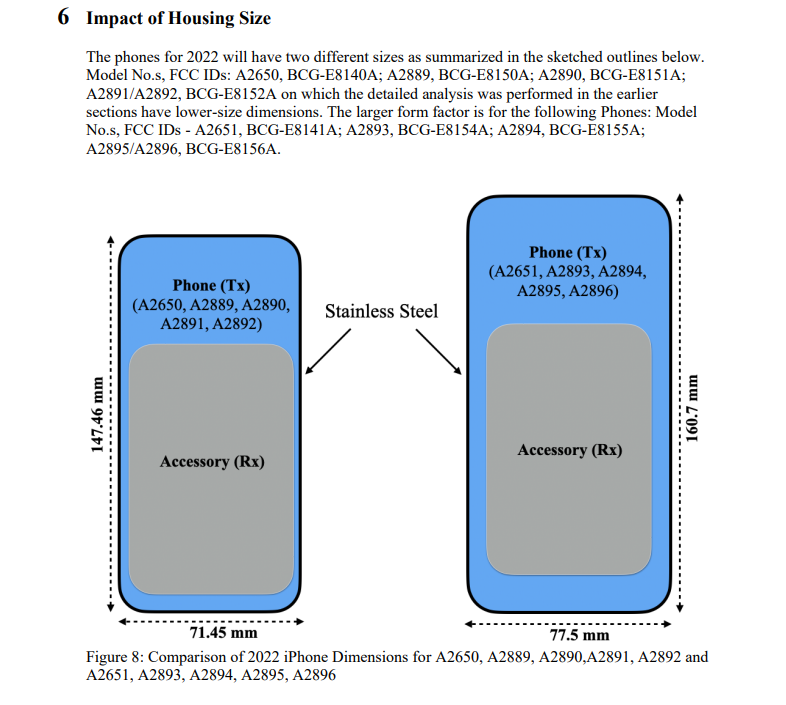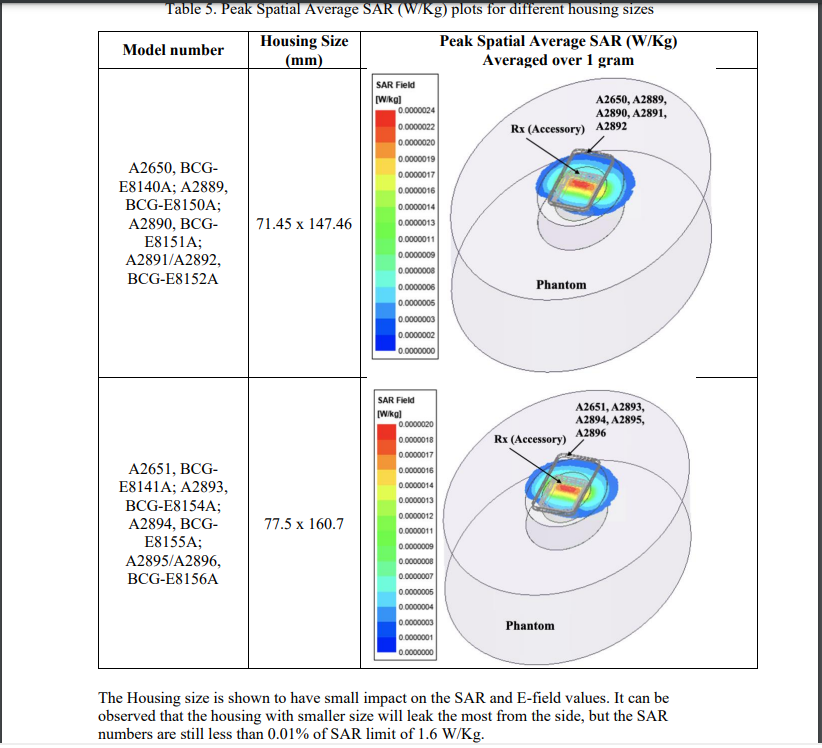It’s official; size does matter…. Well, a little, according to Apple test results!
An official Apple iPhone SAR report for the iPhone 14 models found that: “The Housing size is shown to have a small impact on the SAR and E-field values. It can be observed that the housing with a smaller size will leak the most from the side.”

So people who bought the smaller iPhone might be getting more than they bargained for, like a bigger dose of body penetrating radiation. How do these little-screen iPhone radiation leakers compare to the big-screen iPhone models? Let’s put the size difference into perspective. The following graph shows the radiation surrounding a small and large iPhone form factor. As stated in the report, “It can be observed that the housing with a smaller size will leak the most from the side“. Unfortunately, this isn’t easy to find radiation exposure information, as it takes a fair amount of digging to find the official reports. However, I think every consumer has a right to know that the phone’s form factor can influence the amount of radiation the body absorbs.
The difference isn’t much. But it’s a difference on the phone form factor alone. One might not intuily think smaller means more radiation. This makes sense because the hand is closer to the transmitter and as such, this amount could simply be a result of the inverse square law of distance from the transmitter itself. This makes the point for just how much every millimeter of distance matters, and every millimeter makes a difference!
Versions: A2882 (International); A2649 (USA),BCG-E8138A ; A2881 (Canada, Japan); A2884 (China, Hong Kong); A2883 (Russia)

An interesting point to note in Apple’s iPhone series is the journey from the iPhone 12 to the later models. The iPhone 12, caught in controversy and subsequently banned in France for its high radiation levels, marks a critical point in this trajectory. The ban highlighted concerns over the Specific Absorption Rate (SAR), with the iPhone 12 exceeding the European Union’s safety standards.
However, this moment seems to have been a turning point for Apple when you look at the rise and fall of Apple SAR levels over the history of iPhones. Post iPhone 12, there has been a notable shift in the company’s approach to radiation levels in their devices.
After the iPhone 12, an iPhone 13 series, recorded the highest radiation levels, the more recent iPhone 14 and 15 models, have reportedly been designed with significantly lower radiation levels. This evolution reflects Apple’s response to regulatory scrutiny and underscores a growing industry-wide emphasis on consumer safety in the face of technological advancements.
This shift not only illustrates Apple’s adaptability to regulatory and consumer concerns but also sets a precedent for the industry I hope all manufacturers continue this trend.








